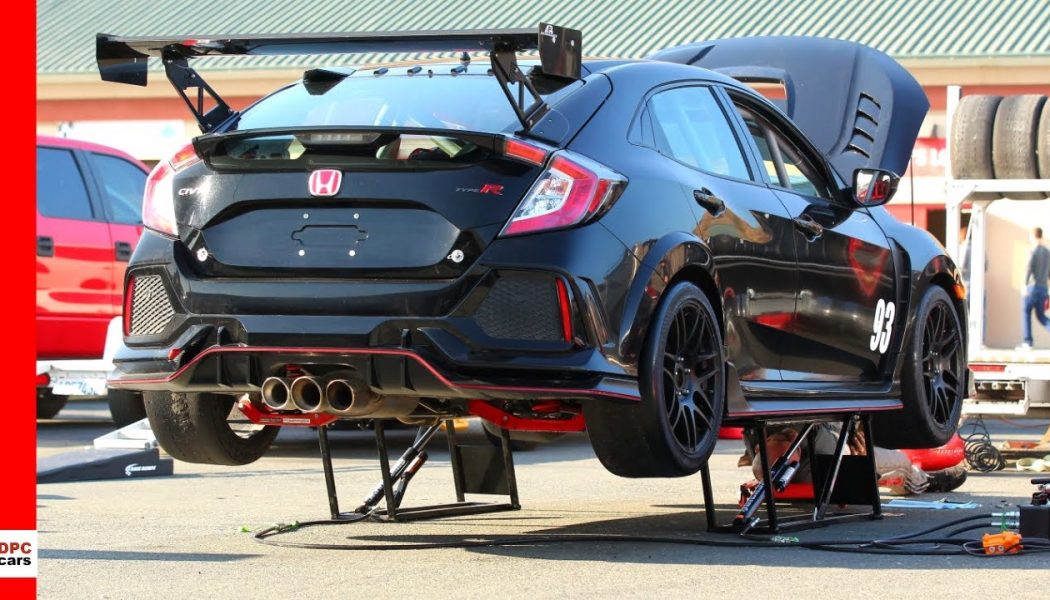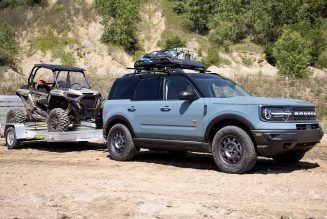The official MotorTrend position on the Honda Civic Type R is pretty clear: It’s awesome. In fact, we think it’s the best front-wheel-drive sports car on the market. As good as it is, no street car is actually a race car. That said, you can absolutely turn a street car into a race car with the proper application of money, parts, time, and labor. Or you can skip all the hard work and hand Honda Performance Development (HPD) a stack of cash to build one for you. HPD calls it the Honda HPD Civic Type R TC, and the HPD people let us lap one.
The “TC” (short for “Touring Car”) appellation is important because it refers to the SRO Motorsports race sanctioning body’s TC Class (formerly Pirelli World Challenge), which is roughly equivalent to the SCCA’s T2 Class. The Civic Type R TC is designed and built to meet class rules for both organizations, so you can get straight to competition the minute you take delivery of your new race car.
Both classes are designed around racing all-new or nearly new street cars on track within a power and weight classification. TC and T2 are a step below the top touring categories, TCR and T1, and both make it very easy (in racing terms) to modify a street car into a race car. I could give you the list of new parts and modifications on the Type R TC, but it’s half a page long, which is nothing compared to the eight pages in the SCCA rulebook dedicated to all things you can’t do when building a T2 Class car.
Modified for Civic Duty
Here are the important points: The Civic Type R TC has a stock engine with an aftermarket exhaust, but its engine computer affords some tunability (from 270 to 330 hp), depending on series rules. Transmission and gear ratios are mostly stock, too, but HPD upgrades third- and fourth-gear with more robust parts. There’s a more aggressive limited-slip differential. Springs and shocks get replaced with race parts, and you can upgrade the anti-roll bars. Rubber suspension bushings get replaced with spherical metal bushings. Camber and caster plates adjust the alignment, within regulations. Stock brake calipers feature new rotors and race pads. Oil and water coolers get upgrades and more ducting. The interior gets stripped and replaced with a roll cage, racing seat, and new steering wheel. And that’s about it.
The Right Track
Being so much lighter, the car is of course quicker, but the engine also spins to redline more quickly. Exiting a turn, the more aggressive limited-slip differential allows you to get on the power sooner and lets the front wheels drag the car out of the corner. With race tires, there’s too much grip to force the car into understeer unless you’re trying to. Running down a straight, the stock transmission and shifter work their magic, and you find gears as much by intuition as actually feeling for them.
At the next corner, the upgraded brake pads and rotors are not only more powerful but also have less car to stop, allowing you to go deep into the braking zone before switching from throttle to brake. Be careful when you do, though, because the car’s lighter weight, stronger brakes, and sharper steering mean any steering input gets the rear end wiggling in the braking zone, so it’s on you to get it right.
That’s the only time the car feels loose. Set up to be neutral by the L.A. Honda World Racing crew, the car totally behaves through corners. Use all the curb you want; it won’t knock the rear end loose. Get on maintenance throttle immediately after braking, and keep your cornering speed as high as possible. Lay into the throttle the instant you begin to unwind the steering wheel, even in a hairpin, and the car sticks and goes.
It’s incredibly easy to drive fast. Some cars wear you out after a few laps because you’re working so hard to get the most out of it while keeping it out of the wall. Not this one. This one is a sweetheart. You can drive it on the edge all day long without breaking a sweat. Finding time in your laps comes down to fine-tuning your lines and braking points.
Six-Figure Civic
It’s a lot like a street-legal Civic Type R in that way. That car, the one with the rear seats in place of a roll cage, can be driven at the ragged edge all day long without a care. It’s the best front-drive back road burner out there. It’s no surprise, then, that the race-ready version is much the same, only better.
Of course, better costs money. A lot of it, as mentioned earlier. You’ll need to fork over $89,900 for your own Type R TC, and that doesn’t include any spare parts, service, or factory support. Yes, that’s more than twice the money of a run-of-the-mill Civic Type R, but as far as brand-new race cars go, it’s really not too bad a price. It’s also not the only rung on the racing ladder. If either your wallet or your talent isn’t up to it, there’s the Civic Si TCA with 170 to 220 hp for $52,500. If you’ve already graduated from TC/T2 and you’re ready for TCR/T1, you can step to the Civic Type R TCR for a cool $172,238 and race with the big kids.









